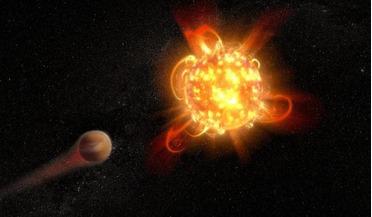 22 October 2018
Frequent superflares spell doom for life around red dwarfs
22 October 2018
Frequent superflares spell doom for life around red dwarfs
... Activity across Time. HAZMAT uses the observing power of the Hubble Space Telescope to survey red dwarfs (also known as M dwarfs) in ultraviolet light at three different ages – young, intermediate, and old. At the moment, HAZMAT is concentrating...
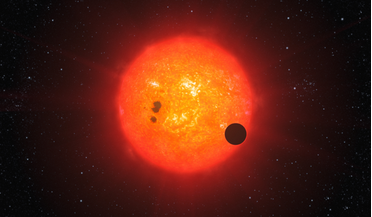 17 February 2020
Earth-sized planet behind unusual star signals say astronomers
17 February 2020
Earth-sized planet behind unusual star signals say astronomers
... star, the emission properties could be accounted for if an Earth-size planet was found to be whizzing around the red dwarf in a one to five day orbit and interacting with the plasma in GJ 1151’s magnetosphere. Although it is more likely that...
 15 November 2017
Earth-mass temperate exoplanet found close by
15 November 2017
Earth-mass temperate exoplanet found close by
...-mass planets amenable to characterisation. In particular, NIRPS, the infrared arm of HARPS, will boost our efficiency in observing red dwarfs, which emit most of their radiation in the infrared. And then, the ELT will provide the opportunity...
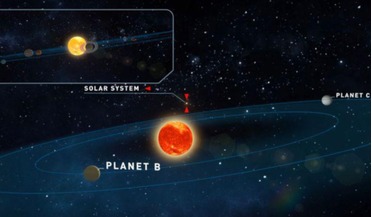 19 June 2019
Two new Earth-like planets found around nearby star
19 June 2019
Two new Earth-like planets found around nearby star
... located just 12.5 light years away from Earth – this cool, red dwarf, only came to the attention of astronomers in 2003, after its ...bit less gaseous material would make it a brown dwarf instead of a red dwarf, has been found to house two Earth-like ...
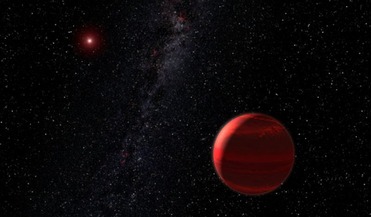 03 February 2020
Researchers discover "invisible" stars too dim to be seen
03 February 2020
Researchers discover "invisible" stars too dim to be seen
...type giant or a super-giant, wasn’t behaving oddly at all. Instead two red dwarf stars at 57 percent and 36 percent of the mass of the Sun were... the team concluded that two practically invisible red dwarfs were the cause of the dimming and brightening...
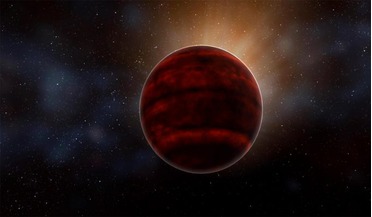 28 February 2018
Habitability of nearest exoplanet in doubt after powerful flare
28 February 2018
Habitability of nearest exoplanet in doubt after powerful flare
... nearest star to us – casts doubt on whether the Solar System’s nearest exoplanetary neighbour, Proxima b, which orbits the red dwarf star, would be suitable to host complex life. The flare was detected last March by scientists observing the...